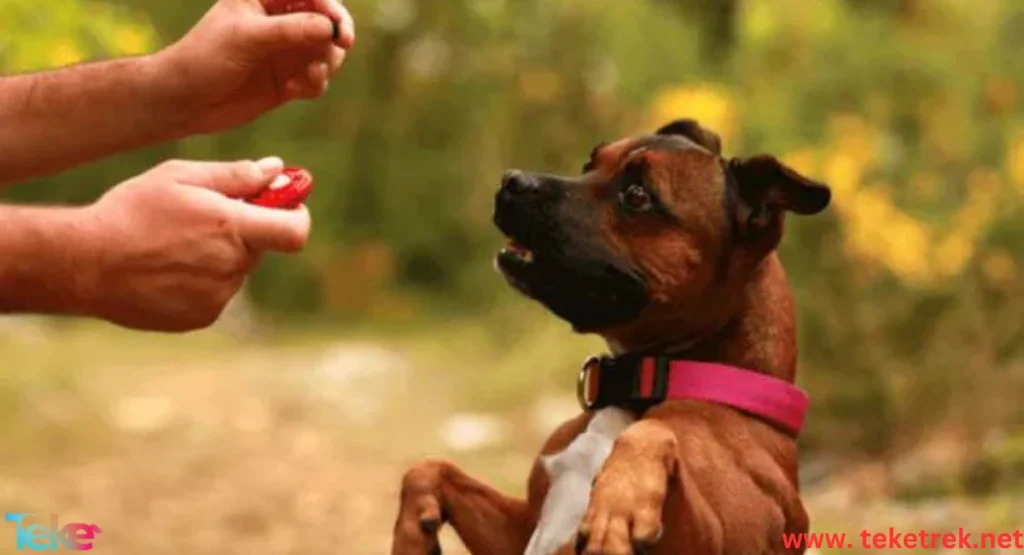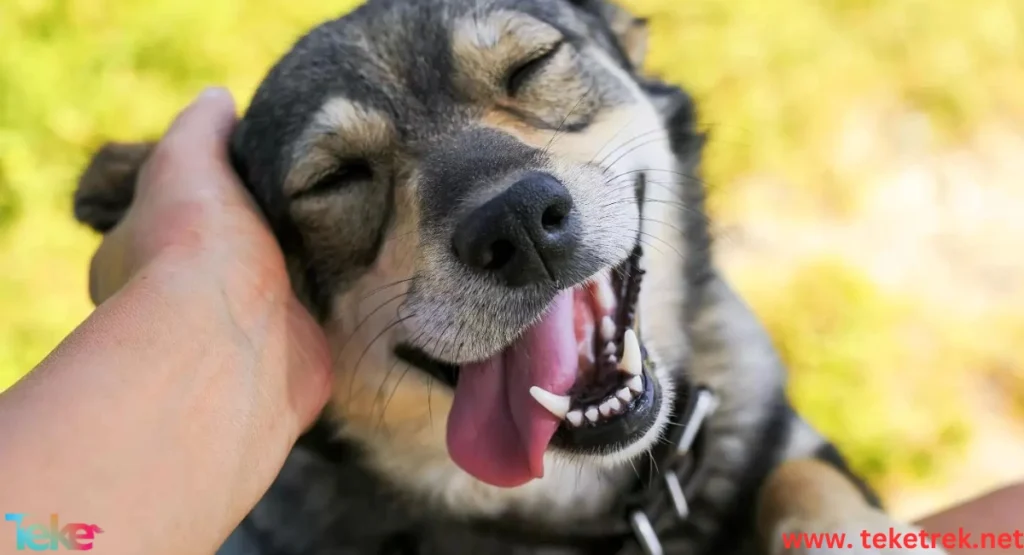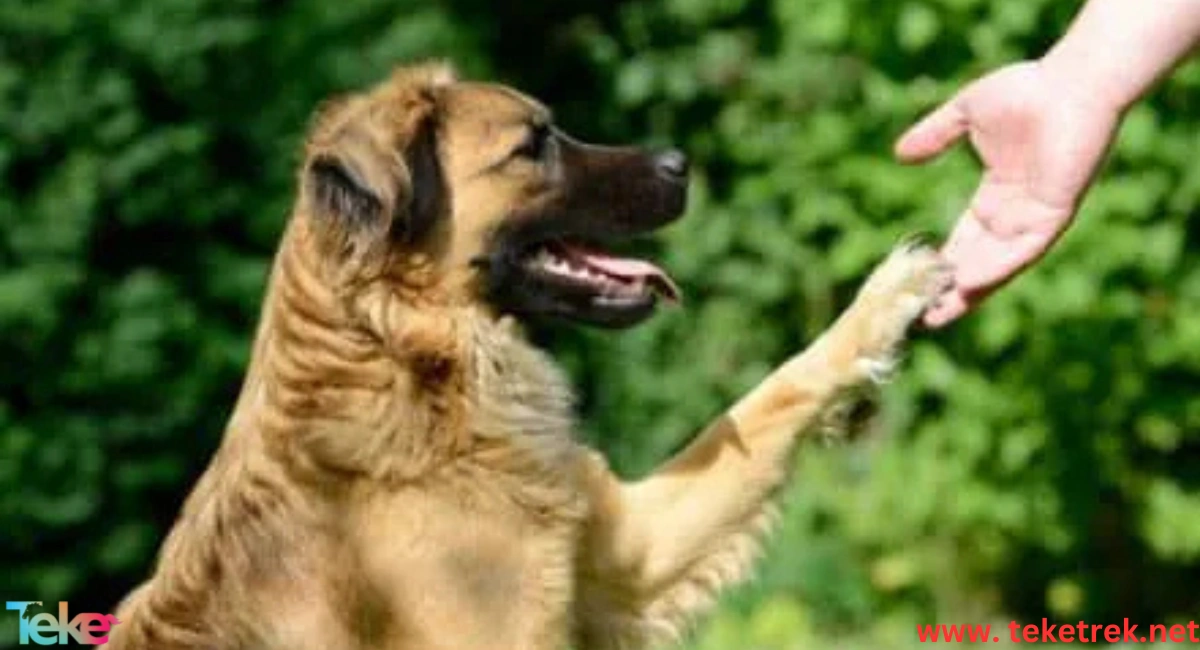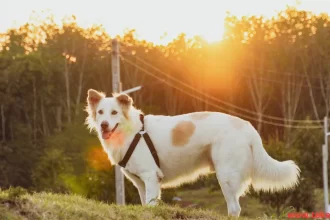Dogs, our loyal companions, communicate with us in many ways. They have always been an integral part of human life, bonded as faithful friends and devoted pets. Humans have long sought to understand these creatures, to know what they feel and think. And because dogs cannot express their emotions through words, they rely on body language to communicate. This language — which includes facial expressions, tail movements, body postures, ear positions, and other signals — carries a wealth of meanings and messages.
Understanding dog body language goes beyond simply knowing the meaning of certain gestures. It’s about being able to read these signals in context, understand the emotions behind them, and respond appropriately. This skill helps build a stronger, deeper relationship with dogs and enables us to meet their needs better, ultimately enhancing their happiness and well-being.
In this article from teketrek, we will dive into the fascinating world of dog body language. We’ll explore a wide range of signals that dogs use to express their emotions — from joy and fear to anger and anxiety. We’ll give you the keys to understanding these signs and help you “translate” them into words so you can communicate better with your dog and truly understand what it’s trying to tell you.
Why Is It Important to Understand Dog Body Language?
Understanding dog body language is important because it helps us communicate with them and better understand their needs and emotions. This builds a stronger, more trusting bond between humans and dogs. It also helps prevent situations that could lead to fear or aggression.
Benefits of understanding dog body language:
- Effective communication: By reading tail movements, facial expressions, body postures, and even vocal tones, we can understand what a dog is trying to convey.
- Building a stronger bond: When we understand a dog’s needs and feelings, we can respond appropriately, strengthening trust and connection.
- Avoiding dangerous situations: Recognizing signs of fear, anxiety, or aggression helps us prevent scenarios that could result in bites or attacks.
- Better training results: Understanding body language makes dog training more effective and positive.
- Identifying health problems: Some changes in body language may signal health issues, allowing early intervention and veterinary help.

How to Understand Dog Body Language? Tail Signals
Reading a dog’s body language — especially tail signals — helps us communicate with them more effectively. A high, wagging tail often indicates happiness, while a low tail or one tucked between the legs may signal fear or discomfort. A still tail might suggest curiosity or alertness.
Here’s a breakdown:
- High, wagging tail: Shows happiness, friendliness, and playfulness, especially when the dog is excited to see someone.
- Low or tucked tail: May indicate fear, anxiety, insecurity, or submission.
- Still tail: Could signal curiosity, alertness, or mild tension.
- High and stiff tail: Might indicate aggression or a threat.
- Slow wagging tail: Suggests relaxation and calmness.
- Fast, strong wagging: Signals excitement and enthusiasm.
- Tail wrapped around legs: May show fear or an attempt to calm the situation.
Causes of cats’ constant meowing: hunger, illness, and the most prominent solutions
Eyes and Ears: Reading Your Dog’s Emotional State
Observing your dog’s eyes and ears gives valuable insight into its emotions and state of mind, strengthening your connection and helping you respond to its needs.
Eyes:
- Direct, steady stare: May signal a challenge, an attempt to assert dominance, or even fear — especially if paired with facial tension.
- Side glances with avoided eye contact: Suggest fear, anxiety, or discomfort.
- Dilated pupils: Can indicate fear, excitement, or stress.
- Frequent blinking: Might be a sign of tension or unease.
- Almond-shaped, soft eyes: Usually mean relaxation and calmness.
Ears:
- Ears up and forward: alertness, interest, or curiosity.
- Ears pulled back: fear, anxiety, discomfort, or mild aggression.
- Ears flat/low: Usually indicate fear or submission.
Common Body Movements and What They Mean (Pawing, Curling Up, Lying Down)
Dogs perform a variety of body movements, each with possible meanings. Curling up is a common sleeping position, often seen when dogs are cold, tired, or seeking safety. Pawing can be playful or an attention-seeking gesture. Lying down, especially in a relaxed state, usually indicates comfort and security.
In more detail:
- Curling up: Reminiscent of their wild ancestors, this position conserves body heat and protects vital organs. It can also indicate unease or the need for comfort.
- Pawing: When a dog places its paw on you, it may be playful, trying to get your attention, or showing affection — like a gentle “petting you back,” according to TikTok creators FivebyFiveK9.
- Lying down: A relaxed dog lying on its side or back generally feels safe and comfortable in its surroundings. However, a dog that lies down while tense or panting might not be at ease, as noted by the organization Dogs for Good.
- Circling before lying down: A behavior inherited from wild ancestors, where dogs trample and circle to flatten grass or clear debris — creating a “nest.” It also serves as a way to check for potential threats before resting.
How to Train Cats to Use the Litter Box | Step-by-Step Guide for All Ages
How to Tell the Difference Between Play and Aggression
To determine if a dog’s behavior is playful or aggressive, observe its body language and tone.
Playful signs: wagging tail, relaxed body, cheerful barking, and play bows (front legs lowered, body raised).
Aggressive signs: stiff body, bared teeth, low growling, sharp quick bites, and attempts to retreat from the trigger.
Situations Where You Should Be Cautious of Dog Body Language
You should be extra cautious when dogs show signs of stress, fear, or aggression. Knowing these signs may prevent bites or attacks.
Warning signs to watch for:
- Growling or barking: A clear signal of discomfort and possibly a warning.
- Tail low or tucked: Indicates fear or submission.
- Wide eyes or intense stare: Shows tension or readiness to attack.
- Stiff body posture: May mean the dog is preparing to defend itself.
- Unnatural stillness: An overly calm dog may actually be on high alert.
- Backing away: Suggests discomfort or fear.
- Raised hackles (hair on the back): Indicates tension or self-defense readiness.
- Showing teeth: A sign of aggression and threat.
- Fast panting: Paired with body tension, this could mean fear or anxiety.
- Shaking or trembling: Can indicate fear or stress.

Tips to Strengthen Communication With Your Dog Through Behavioral Understanding
To strengthen communication with your dog, carefully observe its body language, facial expressions, and tail movements. Use a gentle tone and positive words, rewarding desired behaviors with treats and praise. Be consistent in commands and avoid mixed signals.
Top tips:
- Understand your dog’s body language:
- Watch body posture, tail movements, and facial expressions. Is your dog relaxed or tense? Calm or worried?
- Pay attention to signs like growling, trembling, standing on tiptoe, or stiff movements — these may indicate fear or aggression.
- Avoid direct staring, especially if your dog is anxious or scared, as it may see this as a challenge.
- Watch body posture, tail movements, and facial expressions. Is your dog relaxed or tense? Calm or worried?
because that could be perceived as a threat.
- Use a gentle tone of voice:
Speak to your dog with a calm and friendly tone. A soft voice helps create a sense of safety and trust, while yelling or using a harsh tone can cause fear or confusion. - Reward positive behavior:
Reinforce good behavior with treats, praise, or play. This helps your dog associate desired actions with positive outcomes, strengthening the bond between you. - Maintain consistency:
Use the same commands, gestures, and tones for instructions. Consistency helps your dog understand what is expected of them, preventing confusion. - Respect their boundaries:
If your dog seems uncomfortable, stressed, or fearful, give them space. Forcing interaction can lead to defensive or aggressive behavior. - Spend quality time together:
Engage in activities your dog enjoys, such as walks, playtime, or training sessions. This strengthens your emotional connection and trust. - Learn your dog’s unique signals:
Every dog has its own “dictionary” of body language. Observe your dog carefully to learn their individual cues, from how they wag their tail to how they position their ears.
Conclusion
Understanding your dog’s body language isn’t just about reading their movements — it’s about building a deeper, more trusting relationship. By observing their tail wags, ear positions, eye expressions, and overall body posture, you can interpret their emotions and respond accordingly. This not only keeps your dog happy and safe but also makes your bond stronger and more meaningful.





